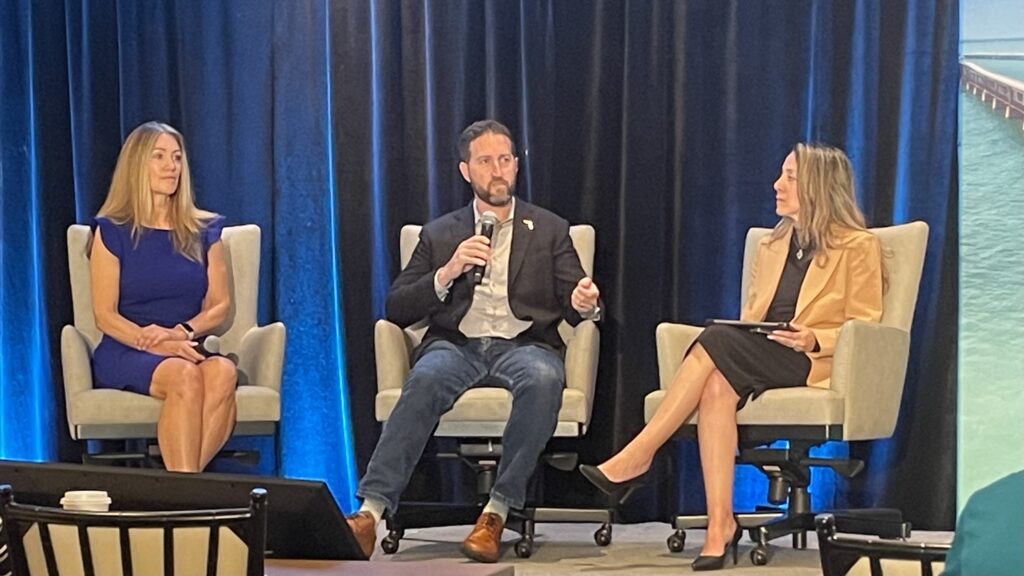By Nathan Crabbe, The Invading Sea
As Florida faces increasing challenges from climate change, public and private officials gathered this week to discuss efforts to protect residents from flooding and other impacts.
This week marked the 16th Annual Southeast Florida Regional Climate Leadership Summit, held this year over three days in Key West. Attendees heard Tuesday morning from several speakers about work being done to improve coastal infrastructure, reduce greenhouse gas emissions and restore ecosystems.

One area of focus was the Resilient Florida grant program, which has awarded $1.55 billion to 668 projects across the state since its inception in 2021. Wes Brooks, chief resilience officer for the state of Florida, said the “money is just starting to get into the system and we hope to build on that going forward.”
Brooks it’s impossible to “floodproof the entire state,” so the strategy is to “minimize the duration and intensity of flood impacts for as many communities as we can across the state.”
Increased flooding during king tide events as sea levels rise was among the trends highlighted by Jonathan Rizzo, a National Weather Service meteorologist in Key West. Climate activist and writer Bill McKibben described rising global temperatures that have jumped even higher since 2023, along with severe storms, wildfires and other impacts.
“We’re clearly on an accelerated path – what already is dangerous is now more dangerous,” said McKibben, who addressed the summit by video.

But McKibben said recent years have also brought declining costs for solar and wind power. People are used to thinking about solar and wind power as “alternative energy” as if they were the “Whole Foods of energy,” he said, but they’ve become the “Costco of energy” now that they produce cheaper power than fossil fuels.
The summit is organized by members of the Southeast Florida Regional Climate Change Compact, a partnership between Broward, Miami-Dade, Monroe and Palm Beach counties to work together on climate threats and solutions.
The region has been a trailblazer in collaborating on these issues, said Jim Murley, who was Miami-Dade County’s first chief resilience officer and then senior resilience advisor to the county before recently retiring.
“We’re not saying goodbye to Southeast Florida,” Murley said. “In fact, we are going to use all the creative work that we have been doing the last 16 years and then build on it.”
Nathan Crabbe (ncrabbe@fau.edu) is editor of The Invading Sea. Sign up for The Invading Sea newsletter by visiting here. To support The Invading Sea, click here to make a donation. Banner image: A panel discussion at the summit featuring resilience officers from Broward, Miami-Dade, Monroe and Palm Beach counties (Nathan Crabbe photo).


